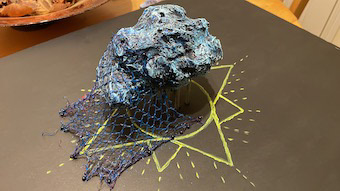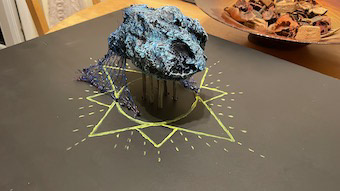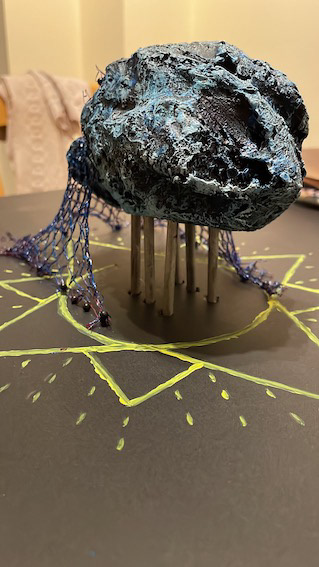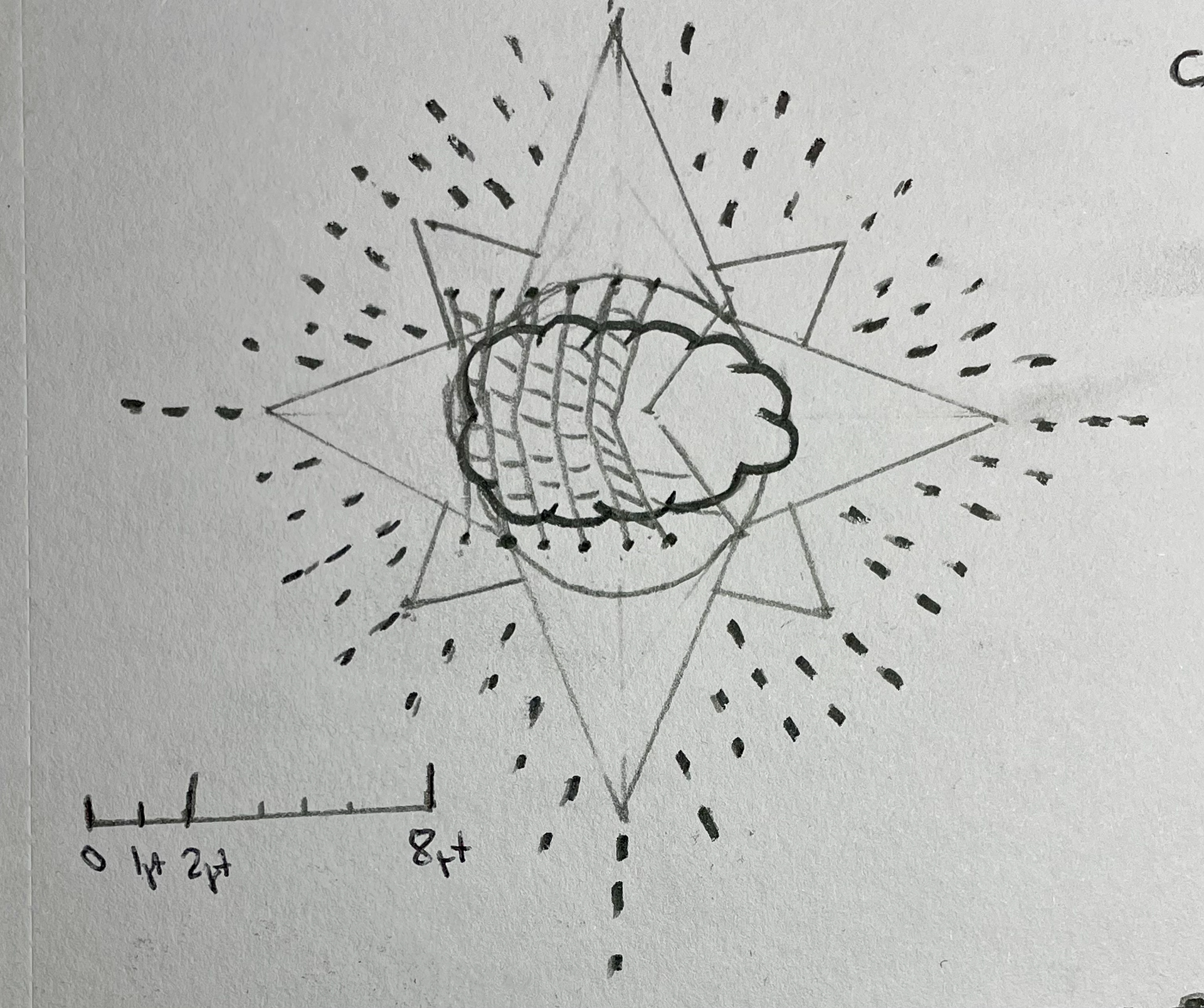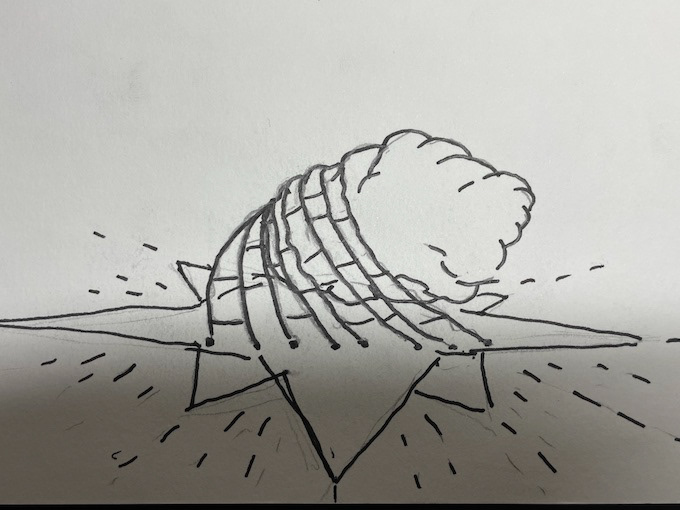Catching Ludovico's dream is a working title: That pays homage to James Ludovic Lindsay, 26th Earl of Crawford and his effort spent on many days and nights trying to guess the “riddle in dark night sky” looking out for great comets through many of his contraptions and with his peers, in particular with David Gill. They tested the very notion of catching stars through several of Ludovics observatories and expensive expeditions. Everyone knew that Ludovic’s ambitions knew no bounds for when it came to astronomy and what was beyond the clouds of this world.
This is a new series of work for Haigh Hall, commissioned by Wigan Council and funded by Heritage Lottery Fund and Arts Council England. The work is in collaboration with Plincke. Curated by Al & Al. Initial develop with Bren O Callaghan.
Above photo taken by Al & Al on a studio first developing the project.
Trapped under a giant net, floating slightly above the surface is a comet caught by a net. The comet is suggestive that it is been caught by a giant net. Its playful in it appearance, almost cartoon like, like a child exploring or going on an expedition for the first time. Out with net to catch tadpoles with the science class. The the scale of the work adds to the cartoon feel of the work. Whilst work is playful on its appearance.
On exploring the comet, there are symbols that represent the objects found within Haigh Hall itself and also in the heavenly library catalogue that can be found on the underbelly of the comet.
There is a net is holding or suggestive that it has caught the comet itself. You might say that a star has been caught. Its homage to Ludovico’s collection, he literally caught the stars in his expeditions, is his treasures, in his ideas and in his imagination. He married wonder with science. Its an example of how we might catch our dream, our shooting stars. Here it is presented in a playful manner, in rudimental childlike form.
The design of the ground in which in the comet is floating above is taken of Heavenly Library, adding an extra layer of history to the work and further recognition towards the families history
